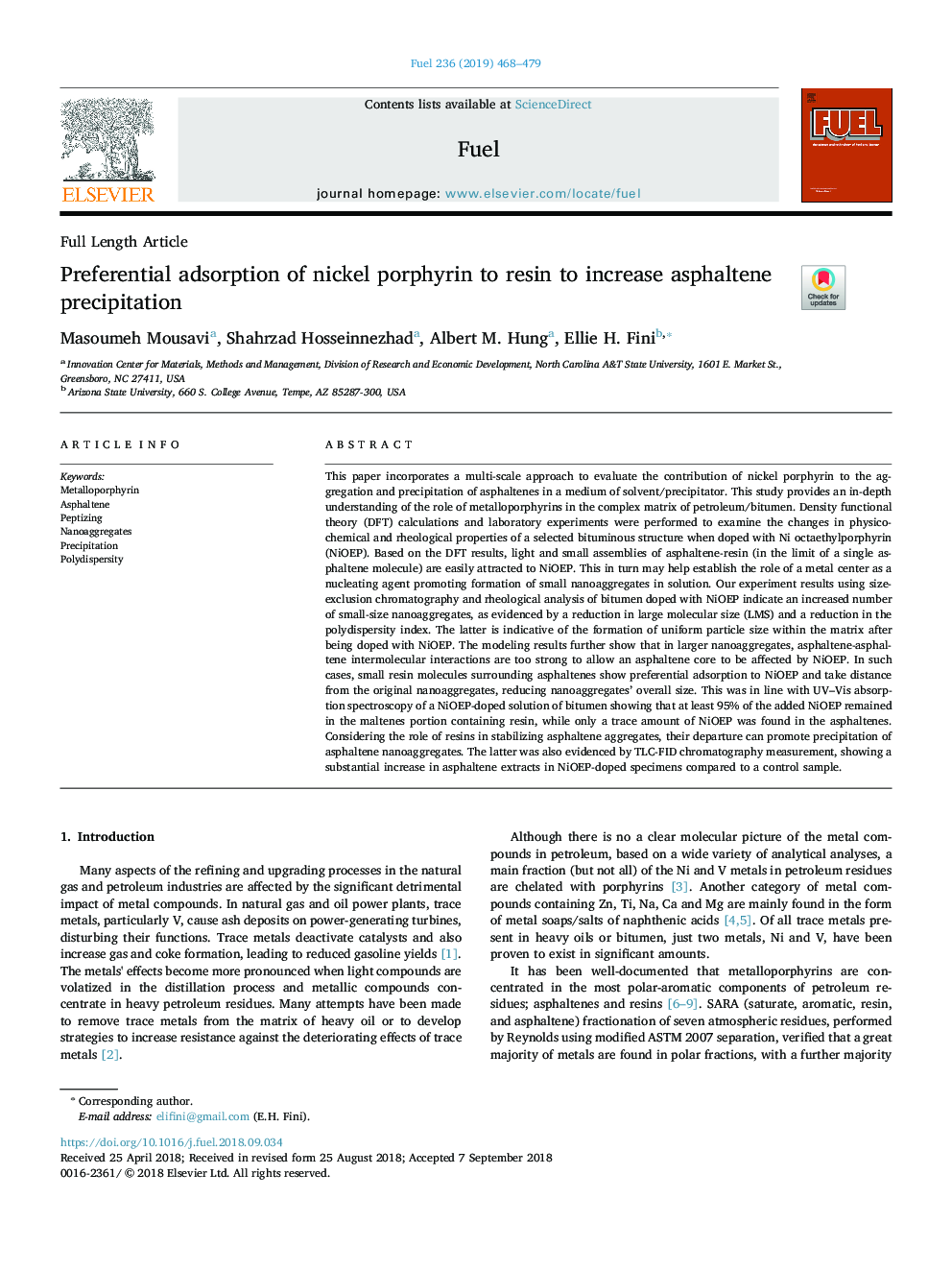| Article ID | Journal | Published Year | Pages | File Type |
|---|---|---|---|---|
| 10145450 | Fuel | 2019 | 12 Pages |
Abstract
This paper incorporates a multi-scale approach to evaluate the contribution of nickel porphyrin to the aggregation and precipitation of asphaltenes in a medium of solvent/precipitator. This study provides an in-depth understanding of the role of metalloporphyrins in the complex matrix of petroleum/bitumen. Density functional theory (DFT) calculations and laboratory experiments were performed to examine the changes in physicochemical and rheological properties of a selected bituminous structure when doped with Ni octaethylporphyrin (NiOEP). Based on the DFT results, light and small assemblies of asphaltene-resin (in the limit of a single asphaltene molecule) are easily attracted to NiOEP. This in turn may help establish the role of a metal center as a nucleating agent promoting formation of small nanoaggregates in solution. Our experiment results using size-exclusion chromatography and rheological analysis of bitumen doped with NiOEP indicate an increased number of small-size nanoaggregates, as evidenced by a reduction in large molecular size (LMS) and a reduction in the polydispersity index. The latter is indicative of the formation of uniform particle size within the matrix after being doped with NiOEP. The modeling results further show that in larger nanoaggregates, asphaltene-asphaltene intermolecular interactions are too strong to allow an asphaltene core to be affected by NiOEP. In such cases, small resin molecules surrounding asphaltenes show preferential adsorption to NiOEP and take distance from the original nanoaggregates, reducing nanoaggregates' overall size. This was in line with UV-Vis absorption spectroscopy of a NiOEP-doped solution of bitumen showing that at least 95% of the added NiOEP remained in the maltenes portion containing resin, while only a trace amount of NiOEP was found in the asphaltenes. Considering the role of resins in stabilizing asphaltene aggregates, their departure can promote precipitation of asphaltene nanoaggregates. The latter was also evidenced by TLC-FID chromatography measurement, showing a substantial increase in asphaltene extracts in NiOEP-doped specimens compared to a control sample.
Related Topics
Physical Sciences and Engineering
Chemical Engineering
Chemical Engineering (General)
Authors
Masoumeh Mousavi, Shahrzad Hosseinnezhad, Albert M. Hung, Ellie H. Fini,
